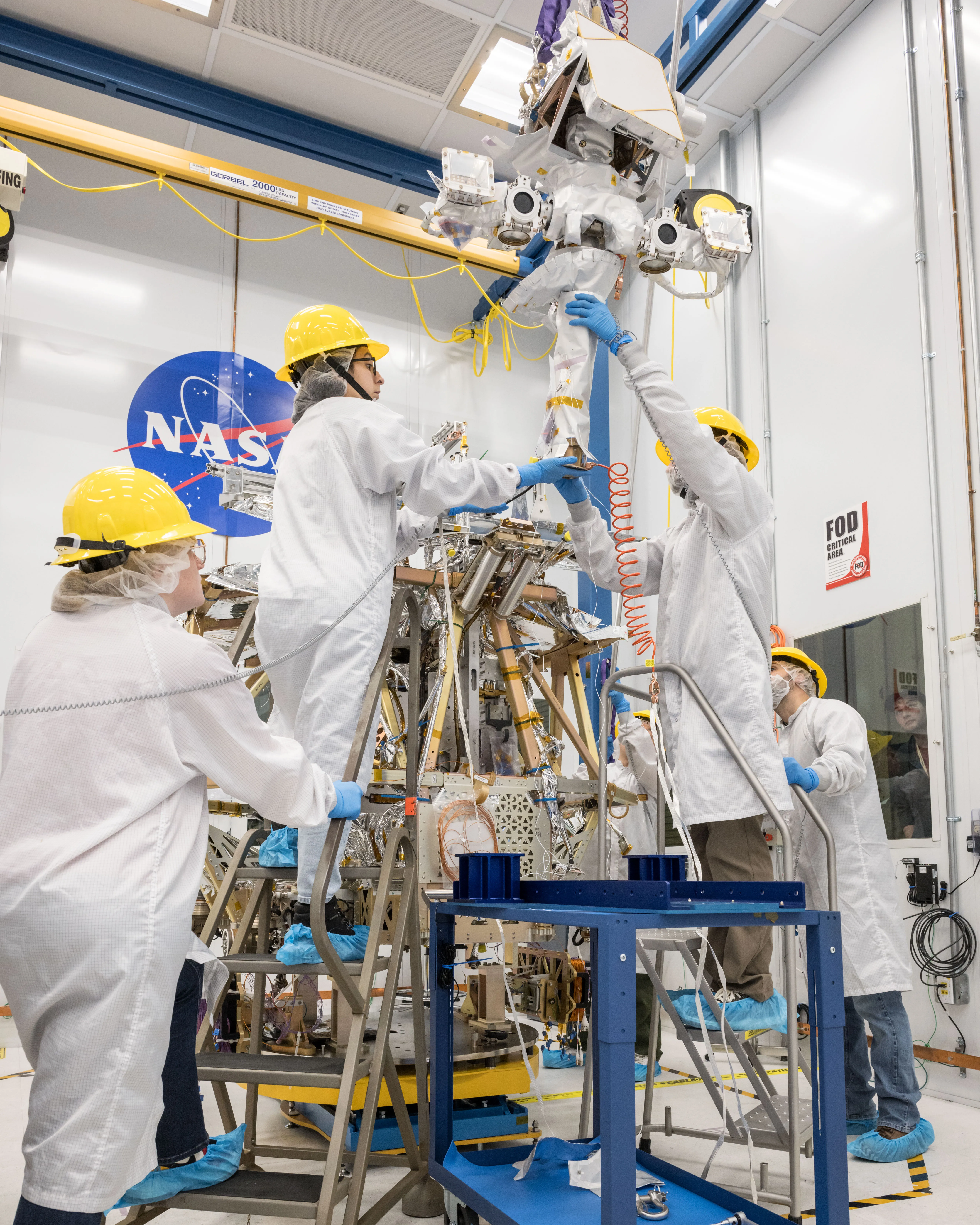In this image from Feb. 12, 2024, engineers lift a mast into place on NASA’s VIPER (Volatiles Investigating Polar Exploration Rover) robotic Moon rover. VIPER’s mast and the suite of instruments affixed to it look a lot like the rover’s “neck” and “head.” The mast instruments are designed to help the team of rover drivers and real-time scientists send commands and receive data while the rover navigates around hazardous crater slopes, boulders, and places that risk communications blackouts. The team will use these instruments, along with four science payloads, to scout the lunar South Pole. During its approximately 100-day mission, VIPER seeks to better understand the origin of water and other resources on the Moon, as well as the extreme environment where NASA plans to send astronauts as part of the Artemis campaign.
Learn more about VIPER’s mast and mission.
Image Credit: NASA/Helen Arase Vargas
在这张摄于2024年2月12日的照片中,工程师们将一根桅杆吊起,安装在NASA的VIPER(Volatiles investigation s Polar Exploration Rover)机器人月球车上。VIPER的桅杆和固定在上面的一套仪器看起来很像月球车的“脖子”和“头”。桅杆上的仪器被设计用来帮助月球车驾驶员和实时科学家团队在月球车在危险的撞击坑斜坡、巨石和有通信中断风险的地方导航时发送命令和接收数据。该团队将使用这些仪器以及四个科学有效载荷来探测月球南极。在大约100天的任务中,VIPER试图更好地了解月球上水和其他资源的起源,以及作为阿尔忒弥斯任务的一部分,NASA计划将宇航员送往月球的极端环境。
图片来源: NASA/Helen Arase Vargas







